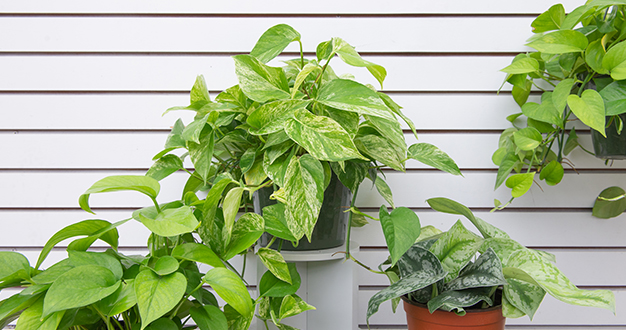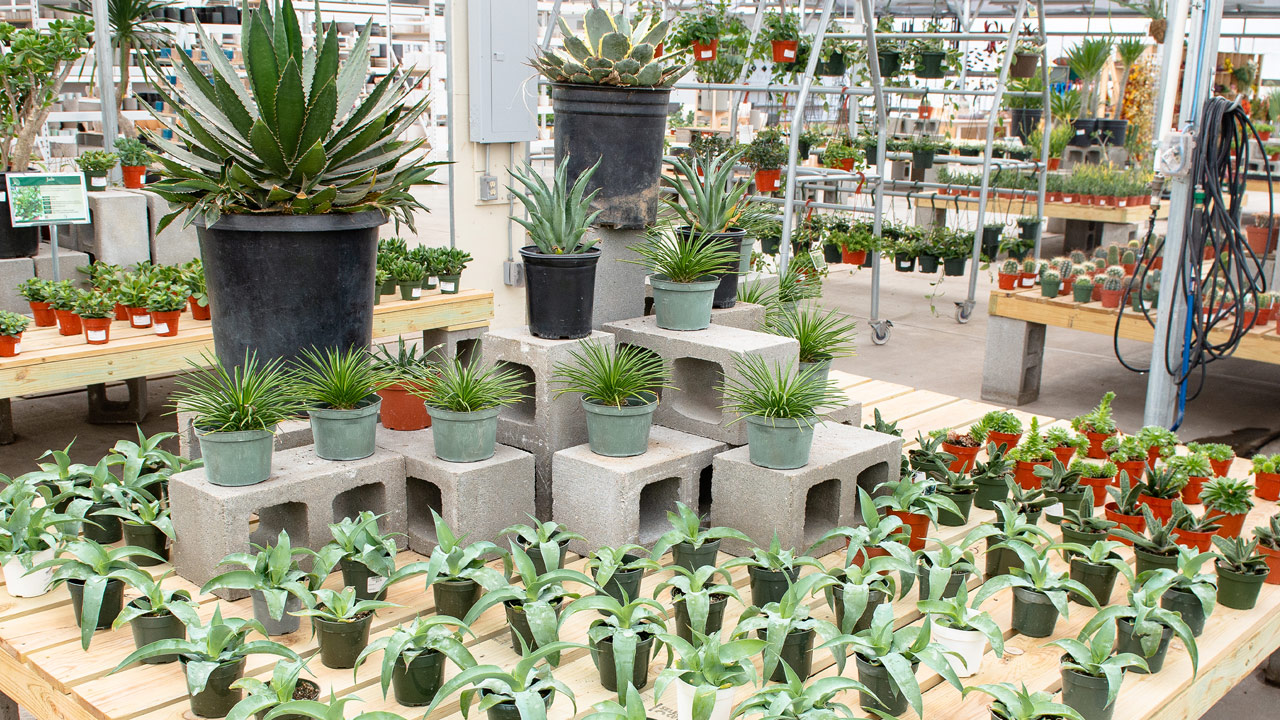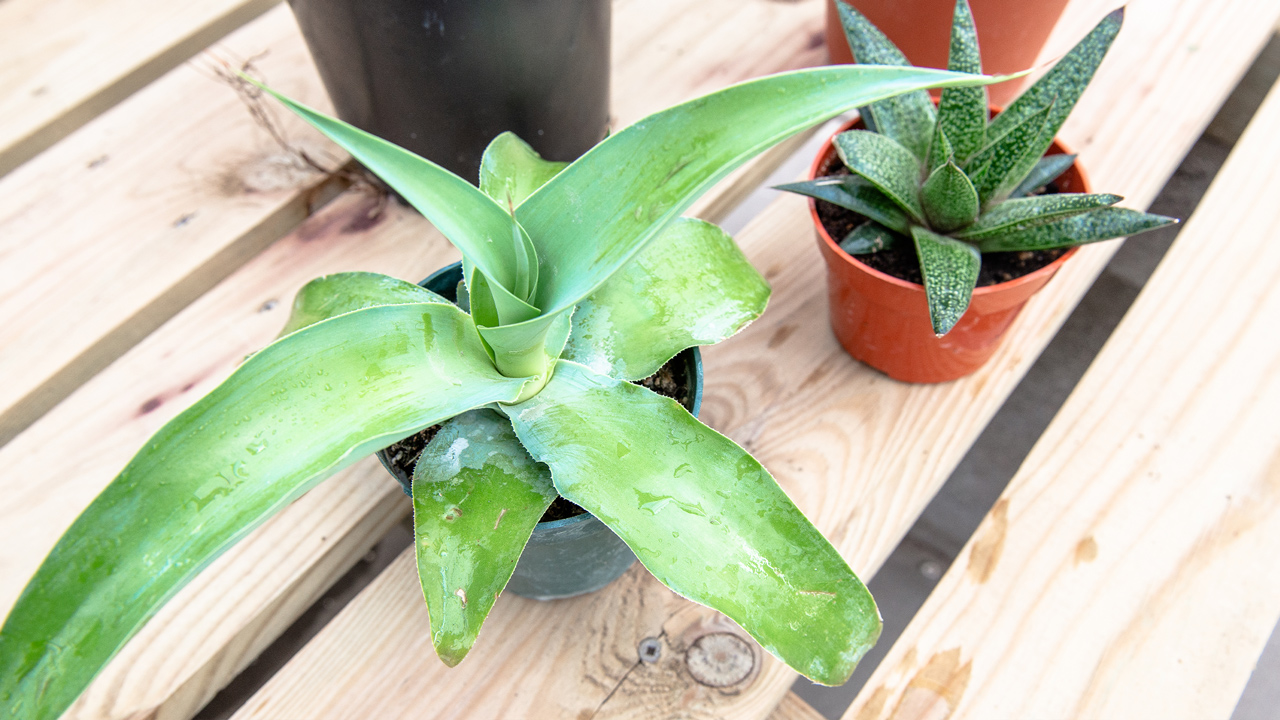
Certain plants just naturally attract a following, and agave is one of those plants. And why not? It’s easy to care for, comes in lots of styles, and it’s a handsome plant too. What more could anyone want for a collection? Here, we introduce you to this captivating genus of houseplants and see if you agree.

Their Rich History
Globally speaking, the genus Agave is relatively local, with its species native to hot, dry areas of both North and South America. Agaves – the genus is often used as the common name too – typically form a low-growing rosette of sturdy, pointed, succulent leaves with sharp spines either along the edges, at the tips, or both. In their native habitat, agaves are slow-growing and take many years to reach full maturity and produce their first tall, blooming stalk.
In addition to being beautiful, species in the genus Agave have been used by humans for centuries. In some species, the fibrous leaves provide raw material for strong rope. In others, the flowering stalks and even parts of the leaves can be roasted or boiled for a food source. Some cultures have found medicinal uses for agaves, and those sharp leaf tips make strong needles for sewing too. And as you may know, certain species are grown to produce tequila.

A Collector’s Favorite
Being warm-weather plants, agaves are popular in our area as a potted resident on the patio during the summer or as an interesting houseplant year-round. It’s one of those plant groups – like Sansevieria, Hoya, or Echeveria – that attracts a devoted following due to the wide variety of sizes, colors, and variegations it produces among the species.
As an example, A. weberii is a large, bold agave with wide, blue-green leaves and a potential for greatness. Maybe you’ve spotted this one happily growing in the bed of our pickup truck in the Greenhouse. This agave can get pretty tall and wide, but like all agaves, it’s a slow grower – so it’ll be a while if you start with a little one. If you like the blue-green color, you’ll love Agave ‘Blue Glow.’ Its chalky, blue-green leaves are edged with pronounced red and yellow stripes – and it stays a compact one- to two-feet-tall too.
If you like variegated species, look for A. lophantha ‘Quadricolor.’ This agave is a real beauty. Its symmetrical pattern is mesmerizing to contemplate from above. Each leaf has a broad, longitudinal stripe, layered in shades of green, with a wide, cream-colored margin and reddish teeth around the edge.
Then there’s A. geminiflora, who takes a completely different approach to the agave life. This species is native to oak woodlands at higher elevations in Mexico. Its narrow, rounded leaves are almost grass-like, and as the plant grows, more and more of these leaves sprout until it eventually takes on a sort of “koosh ball” appearance. A. geminiflora is a more peaceful guy too – its leaves lack those sharp spikes.
You might also discover an interesting agave babe among our assortment of 3” succulents too. And although agaves can look very similar to other rosette-forming, pointy succulents in the genera Aloe, Haworthia, or Dykia, agaves belong to a separate plant family and aren’t closely related to these at all. But, if you’re a fan of that symmetrical rosette form, you probably have a few of each genus in your collection.

Bright Light + Slightly Dry Soil
Like many succulents, species in the genus Agave enjoy lots of bright light – a sunny west- or south-facing window is best when the plant is indoors. On the patio, morning sun and afternoon shade will keep it happy.
In their container, an agave likes to feel cozy – even a bit root-bound – and prefers a potting mix that drains fast but dries slowly. A blend of commercial potting mix combined in equal parts with sand, gravel, or pumice is a favorite. Wait until the soil is dry about half-way down before watering thoroughly, and let the excess water drain completely. A soil probe can remove some of the guesswork when deciding when to water, but if in doubt, it’s always better to wait a day than to overwater your agave.
Find Your New Favorite Agave
Once you fall for an agave, chances are you’ll find yourself hunting for more. And we have several in the Greenhouse to admire if you’re curious. Stop by and find a new one to try. If you have questions, just grab one of us. We’re always happy to talk agaves.


